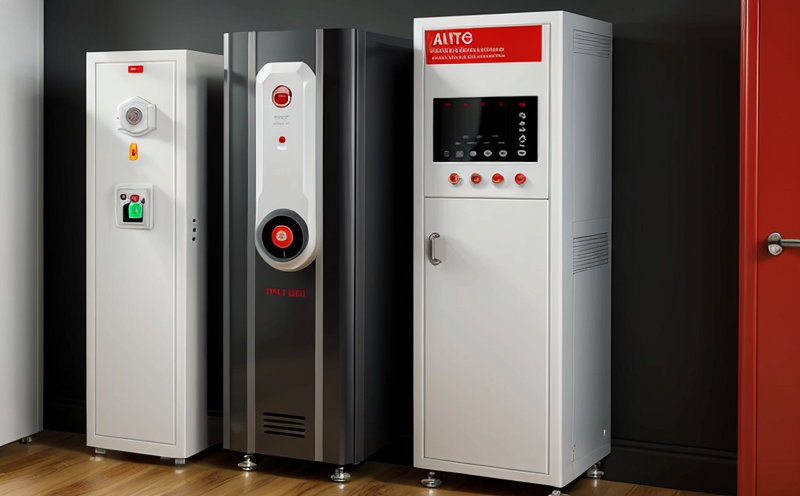False Alarm Immunity Testing
In fire safety testing, false alarm immunity is a critical aspect that ensures fire detection and alarm devices do not trigger alarms in situations where no actual fire hazard exists. This is particularly important for devices installed in environments where ambient conditions mimic the signals that would typically indicate a fire. False alarm immunity tests are conducted to ensure that these devices perform reliably under various non-fire scenarios, thereby maintaining public trust and minimizing unnecessary evacuation or disruption.
The need for such testing arises from the fact that modern buildings incorporate numerous electronic systems, including heating, ventilation, air conditioning (HVAC) units, and other appliances. These can inadvertently generate conditions similar to those that would trigger fire alarms, leading to false alarms. According to ISO 8458:2016, a standard widely recognized in the industry, devices must be robust enough to differentiate between genuine fire signals and these false positives.
False alarm immunity testing involves exposing the device under test (DUT) to various environmental conditions that could potentially mimic a fire. These include but are not limited to high humidity levels, presence of smoke from non-fire sources, and electrical interference. The DUT is then observed for its response, ensuring it does not activate an alarm under these conditions.
During the test, technicians monitor key parameters such as temperature fluctuations, the presence or absence of particulates in the air, and electromagnetic interference (EMI). These variables are controlled to simulate real-world scenarios where false alarms could occur. The apparatus used includes specialized chambers designed to replicate different environmental conditions, ensuring accurate testing.
The acceptance criteria for this test are stringent. According to IEC 62365-1:2018, the standard that governs fire detection and alarm systems, a device must not activate an alarm under specified false alarm-inducing conditions. The report generated from these tests includes detailed observations of the DUT’s behavior during each test run, along with compliance data against relevant standards.
Failure to pass this test can lead to significant consequences for both the manufacturer and end-user. For manufacturers, it could result in product recalls or design modifications. For users, it means risking false alarms that disrupt daily activities and potentially compromise safety protocols during genuine emergencies. Therefore, ensuring compliance with false alarm immunity testing is essential.
Scope and Methodology
| Parameter | Description | Test Conditions | Acceptance Criteria |
|---|---|---|---|
| Environmental Variables | Includes humidity, particulate matter, and electromagnetic interference. | Simulated to mimic real-world conditions that could trigger false alarms. | The device must not activate an alarm under these conditions. |
| Test Equipment | Specialized chambers for controlled environmental testing. | Chambers are calibrated and certified according to ISO standards. | Equipment must be capable of generating the specified test conditions accurately. |
| Data Acquisition | Instruments to monitor temperature, humidity, particulates, and EMI. | Data is collected continuously during testing and analyzed post-test. | Data must meet predefined accuracy levels as per IEC standards. |
| Observation Period | The duration of each test run, typically set to simulate real-world exposure periods. | Determined by the frequency at which false alarms could occur in the field. | The DUT must remain stable for this period without triggering an alarm. |
During testing, environmental variables are carefully controlled using specialized chambers. These chambers can simulate a range of conditions including high humidity levels up to 95%, presence of particulates as fine as 0.3 micrometers, and electromagnetic interference fields that reach up to 100 dB. The DUT is placed in these environments for defined periods, during which continuous monitoring ensures accurate data collection.
The acceptance criteria are strictly adhered to, ensuring that the device under test does not activate an alarm under any of the specified false alarm-inducing conditions. This includes both passive and active testing methods where the DUT is subjected to various stimuli designed to mimic potential false alarms. Post-test analysis involves detailed examination of all collected data to confirm compliance with relevant standards.
The methodologies used in these tests are continually updated to reflect advancements in technology and new challenges faced by fire detection systems. This ensures that the testing remains relevant and effective in preventing false alarms across diverse applications.
Benefits
False alarm immunity testing offers numerous benefits, particularly for those involved in compliance with fire safety regulations and standards. By ensuring devices do not trigger alarms under non-fire conditions, this test enhances public trust and confidence in fire detection systems. This is crucial as it minimizes unnecessary evacuations or disruptions that can occur due to false alarms.
From a legal standpoint, compliance with these tests helps avoid penalties associated with non-compliance. It also ensures products meet stringent quality standards set by regulatory bodies, thereby protecting the manufacturer’s reputation and market position.
The testing process contributes significantly to improving product reliability and performance. By identifying and addressing potential issues early in the development cycle, manufacturers can reduce costly post-market recalls and enhance customer satisfaction. This is especially important for fire safety devices where reliability directly impacts public safety.
For end-users, false alarm immunity ensures that critical systems function as intended during genuine emergencies. It reduces stress and panic among occupants by providing accurate and timely alerts only when necessary. This enhances overall safety within facilities equipped with these systems.
In addition to immediate benefits, the long-term impact of conducting thorough false alarm immunity testing is substantial. It promotes continuous improvement in fire detection technology, leading to more advanced and efficient devices capable of accurately identifying genuine fires while ignoring false positives. This advancement ultimately contributes to better protection against火灾





